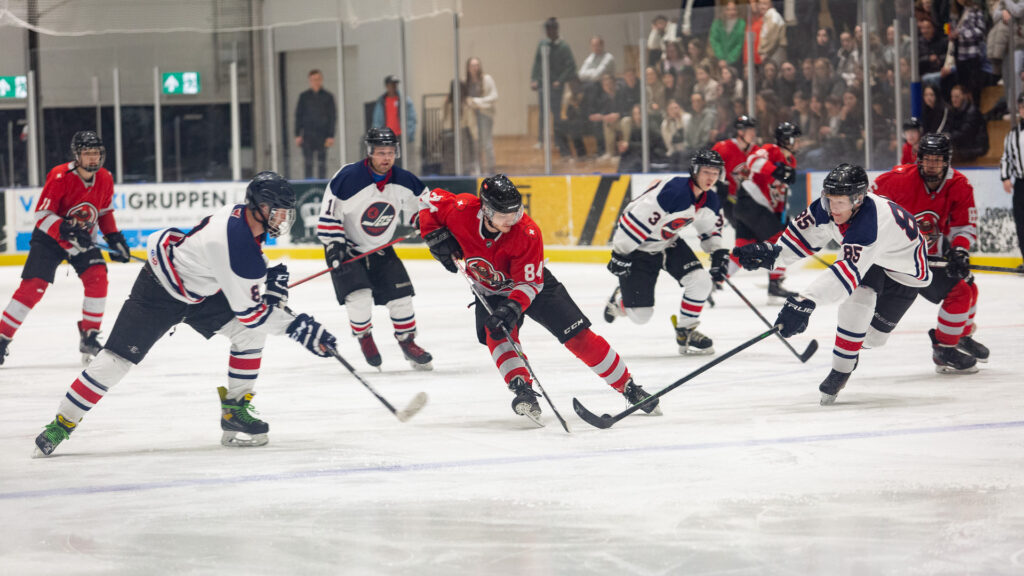
Audience
- Sentiment: Positive
- Political Group: Neutral
- Age Group: 18-50
- Gender: All
Overview
- The article highlights the historical significance of international hockey, focusing on key tournaments like the 1972 Summit Series and the 1987 Canada Cup.
- It discusses how international competition has evolved and adapted to current geopolitical challenges, particularly the absence of Russian players.
- The piece emphasizes the excitement and camaraderie that international hockey brings to fans and players alike, while looking forward to the future of the sport.
The Exciting World of International Hockey: A Journey Through History
Hockey is more than just a sport; it’s a way of life for many, especially in countries like Canada and Russia. When you think of hockey, you might picture thrilling games with fast skating, incredible goals, and passionate fans. But there’s a whole world of international competition that has made the sport even more fascinating. In this article, we’re going to explore the historical significance of international hockey, focusing on key moments like the 1972 Summit Series and the 1987 Canada Cup. We’ll also dive into how today’s world events are changing the game and what that means for players and fans alike.
The Birth of International Hockey Rivalries
The roots of international hockey run deep, and it all started to really take flight in the 20th century. While many might assume hockey is all about the NHL, it’s important to remember that hockey has been played around the world for a long time. The sport has enriched many cultures and created rivalries that go beyond borders.
One of the most defining moments in international hockey history happened in 1972, in what’s now referred to as the Summit Series. Canada faced off against the Soviet Union in a thrilling eight-game series that captured the hearts and minds of hockey fans everywhere. The two nations had very different playing styles, with Canada being known for its physicality and skill, while the Soviets boasted innovative tactics and a team-oriented approach. The first few games saw Canada struggle, leading to a lot of tension and a feeling that national pride was on the line.
Imagine the TV sets flickering to life in living rooms across Canada as people gathered to watch! Every game felt like a battle not just on the ice, but for pride and identity. The series came to a nail-biting conclusion in Game 8, where Paul Henderson scored a last-minute goal that not only clinched the series for Canada but also created an enduring legacy for hockey. That moment transformed hockey into a symbol of national pride and stirred deep emotions in fans and players alike. The Summit Series is often seen as a turning point that really solidified hockey’s place in the hearts of Canadians.
The Canada Cup: A New Era of Competition
Fast forward to 1987, and the world was ready for more excitement. The inaugural Canada Cup took the thrill of international hockey to new heights. This competition brought together the best teams from across the globe, and once again, it was Canada facing the Soviet Union that stole the show. The rivalry was electric, and the anticipation of who would come out on top had everyone on the edge of their seats.
The 1987 Canada Cup is remembered for its intensity and the incredible skills displayed by players like Wayne Gretzky and Mario Lemieux. In the final game, the teams went head-to-head in a contest that showcased the beauty of hockey. It wasn’t just about scoring goals; it was about strategy, endurance, and pure determination. When Gretzky set up Lemieux for the decisive goal, it felt like the culmination of years of rivalry and passion.
But these matches weren’t just games; they were spectacles that brought nations together. Fans adorned in their team colors filled the stands, waving flags and chanting, creating an electric atmosphere that made it feel like the entire world was watching. The Canada Cup helped international hockey evolve and paved the way for future tournaments, making it a key chapter in the sport’s extensive history.
The Evolution of the Game
After these memorable tournaments, international competitions became more frequent, but they also became a bit different. The National Hockey League (NHL) grew and became the dominant professional league, and for a long time, it was where most of the top talent ended up. However, it was important for players to represent their countries and play under their national flags, leading to both excitement and challenges.
For instance, during the Olympics, players would don their country’s colors and join together to chase a gold medal—an experience that was thrilling and deeply meaningful. The thrill of competing against other countries helped build a sense of unity among fans and players alike.
The Current State of International Hockey
But today, the world of international hockey is going through some significant changes, especially with the absence of Russian players and teams from international play. This situation arises from geopolitical tensions, primarily due to Russia’s actions in Ukraine. It’s important to recognize that while sports can bring people together, they can also be impacted severely by global events.
The absence of Russian players in international competitions is notable and marks a significant shift from the days when teams fought for supremacy on the ice. Russia has a storied history in hockey, producing iconic players and winning numerous championships. Their absence feels like a missing piece in the puzzle of international competition.
This absence also influences the dynamics of international hockey tournaments. Without Russian players, teams from other countries might feel they have a better chance of success, but it also means missing out on some of the most skilled players in the world. The rivalries that developed over decades through matches against Russia are crucial to the spirit and drama of the game.
Looking Ahead: The Future of International Hockey
As fans and players alike look to the future, the return of international competitions is highly anticipated. After an eight-year lull, there is hope that tournaments will once again return to the ice, allowing players to showcase their skills on a global stage. Hockey has such a rich international heritage, and the legacy of events like the Summit Series and Canada Cup reminds us of how vital these competitions are.
However, it’s crucial for the hockey community to navigate the current geopolitical landscape carefully. While the game has power to connect us, it is also affected by the world outside the rink. It’s our hope that the best players—and teams—can compete fairly and represent the spirit of the sport.
Wrapping Up
International hockey captures the excitement and camaraderie that so many fans love about the game. It opens doors to friendships across borders and showcases the talents of hockey players from all walks of life. Whether it’s the dramatic moments of the Summit Series or the nail-biting finishes of the Canada Cup, these events have left an indelible mark on the sport.
As hockey continues to evolve, it is essential for fans to stay engaged with the game and support their favorite players and nations. The rhythm of international hockey roars with possibilities; while today’s challenges may shape the future, the spirit of the game remains strong.
So, what do you think about the current state of international hockey? How do you feel about the absence of Russian players, and what do you think the future holds for international competitions? Join the conversation by leaving a comment below!




